Solar Design - Are South-Facing Panels Worth it?
Solar design critically affects how much energy you get from your solar system, and therefore how much money you save. Design features include the number and types of panels, panel orientation and panel tilt. Over the life of the system, a good design can make a very big difference to the economics.
Optimum Tilt Angles for North, East and West Facing Panels
In some cases the roof may not be flat and other factors may influence orientation and tilt. What are the optimum tilt angles for panels with different orientations?
As a general rule, the best tilt angle for panels on north-facing roofs is about the latitude of the location. To demonstrate this, and to look at tilt for other orientations of panels, we’ve used modelling software to estimate the amount of solar irradiation hitting panels of different orientation and tilt angles. The model was located in Melbourne (latitude 37.4 degrees). The results are shown in the graph below.
For the north-facing panels, panels at a tilt angle corresponding to the latitude had the highest solar irradiance. However, most of the benefit of tilting was achieved with 20 degrees tilt. If space is constrained, and also taking into account wind loading, 20 degrees of tilt might be a good choice. Interestingly for east and west-facing panels, no tilt gave the most sun. However, 10 degrees tilt might be chosen for self-cleaning to minimise maintenance. The amount of sun did not drop off much for 10 degrees of tilt for east and west orientations.
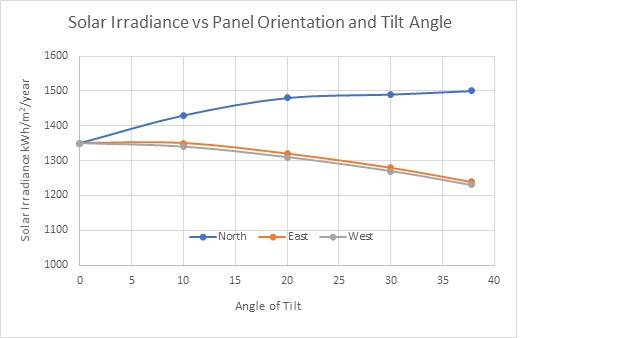
But what happens if space is tightly constrained? On a north face we’ve seen that tilting panels results in significantly more sunlight hitting the panels. However, with tilting, the panels must be spaced apart so that they don’t shade each other. Thus in a given space, less panels can be used if the panels are tilted.
We’ve modelled a flat commercial roof, 10m x 10m, in Melbourne and compared filling the space with flat solar panels to filling it with panels tilted at 20 degrees. We spaced the rows of tilted panels 1.5m apart to minimise shading. For the flat panels we were able to fit 50 panels to give 18.5 kW of panels. The estimated energy output per year was 20 MWh. For the panels tilted at 20 degrees, we were only able to fit 30 panels to give 11.1 kW of panels, with an estimated energy output per year of only 12.7 MWh. Thus we were able to get much more energy using flat panels in this constrained space. Depending on power requirements, flat panels may be a better choice in this situation.
Customers might not want the extra maintenance involved with flat panels (flat panels should be checked and cleaned if needed more regularly than tilted panels). A 10 degree tilt is sufficient to enable good self-cleaning of panels during rainfall. For this system, we spaced rows at 0.8m to minimise shading and managed to fit 40 panels in the space to give 14.8 kW of panels. This system gave 16.9 MWh of energy through the year.
These examples show that it is very important for the designer to work closely with the customer in their specific situation, to achieve an outcome that is the best overall solution. Tilt and orientation are very important factors in commercial solar design, impacting energy output and therefore economics.
Then, what if there's not enough north, west or east-facing roof available?
Are South-facing Roofs Worth it?
There seems to be a common misconception that it is not worth putting solar panels on south-facing roofs. But is this really the case? Again we’ve used a model to look at panels on a residential roof in Melbourne. The roof has a 20 degree pitch with north and south faces (and a minor 4 degree azimuth). We looked at the energy output vs tilt angle. The panels are to be laid flush on the roofs. These layouts are hypothetical and don't take into account actual site constraints. and instead are for illustrations only.
Scenario 1: north-facing panels only
Note that instead of maximising the kW size of the system, this design only utilises the available north-facing roof for maximum yield per panel only.
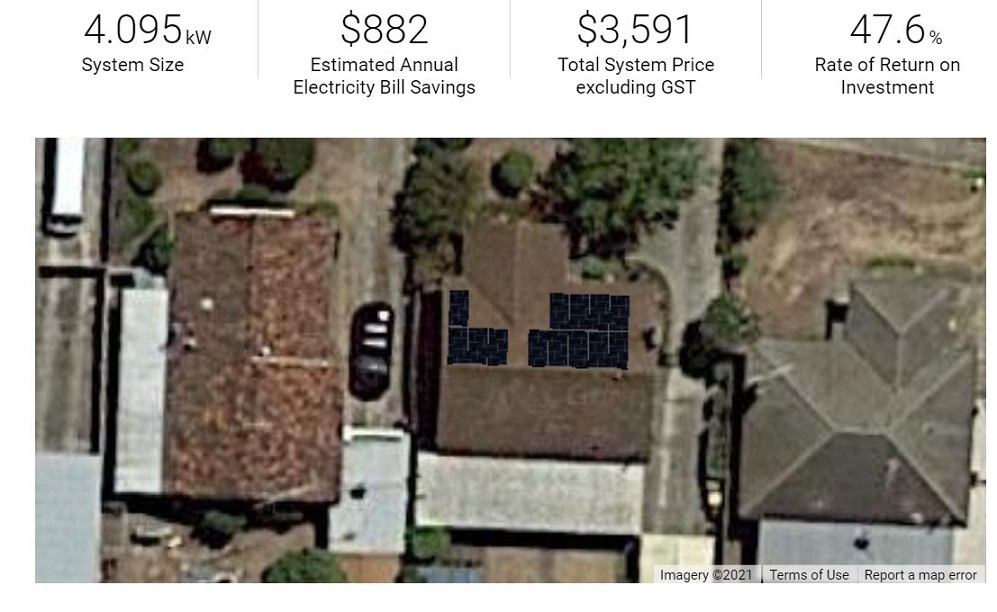
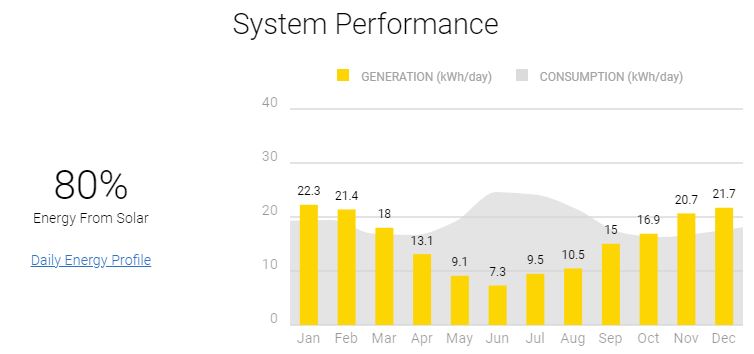
Scenario 2: north and south-facing panels This design focuses on maximising the kW size of the system by utilising the south-facing roof also.
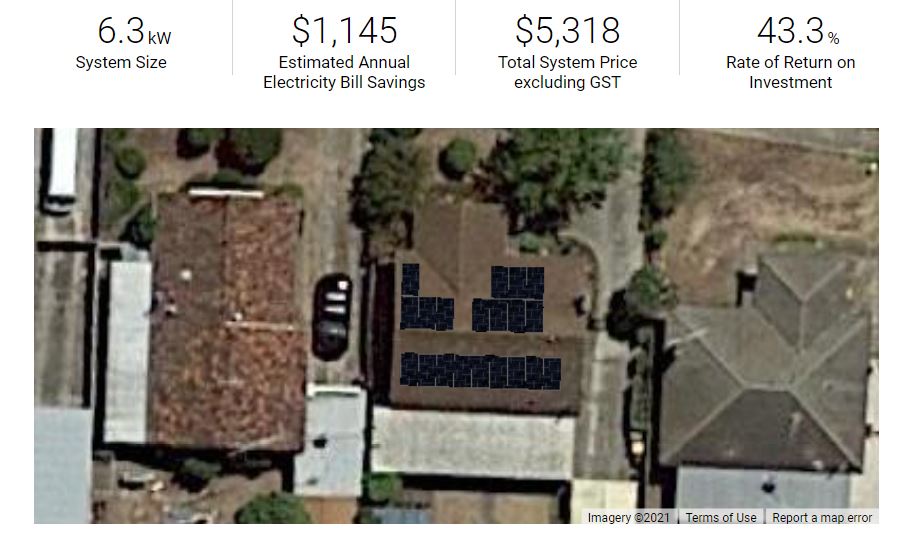
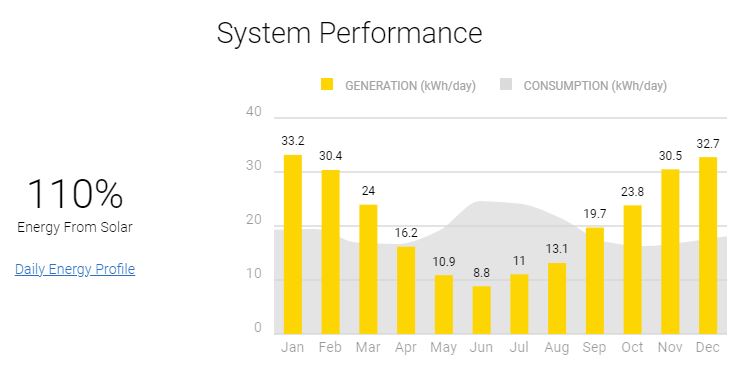
A few notable factors are at play here:
- These figures are after upfront STC discount and both scenarios take into account Victoria Solar (Solar VIC) Rebate of $1,850.
- Economy of scale applies as the bigger system's $/ W system cost is slightly less than the smaller system's.
- It is assumed battery adoption is not a high priority for this customer
- Solar feed-in tariff of circa 10.2c/ kWh applies (at the time of writing this is minimum in VIC; some retailers offer more, increasing the benefit for the bigger system)
- Assumed consumption - seen on the graphs
- Generation modelling is based on at least 10-year weather data
As can be seen, the ROI (Return on Investment) of the north and south facing panels are only a few percents less than the north-facing only scenario. Yet, where else can you get over 40% ROI for your money with very minimum risk in the current economy? Therefore, if other orientation is not available, you would still be better off utilising the south-facing panels (and accessing the most solar incentive) provided that you're not ridiculously over-exporting*. If you are half-interested in battery in the future, then even the more reason to maximise the roof usage for solar energy collection by going for the south-facing panels too.
P.S. *Please ask one of our approved engineers if you want to know more about it.



